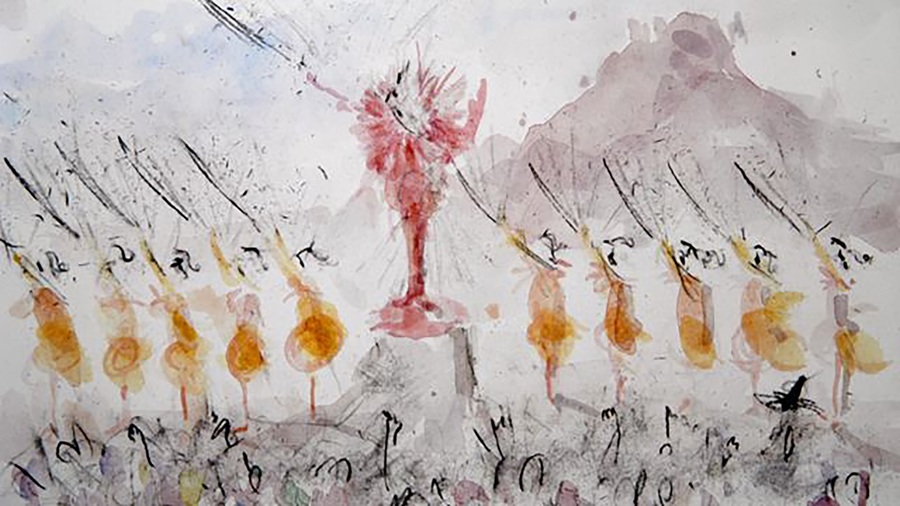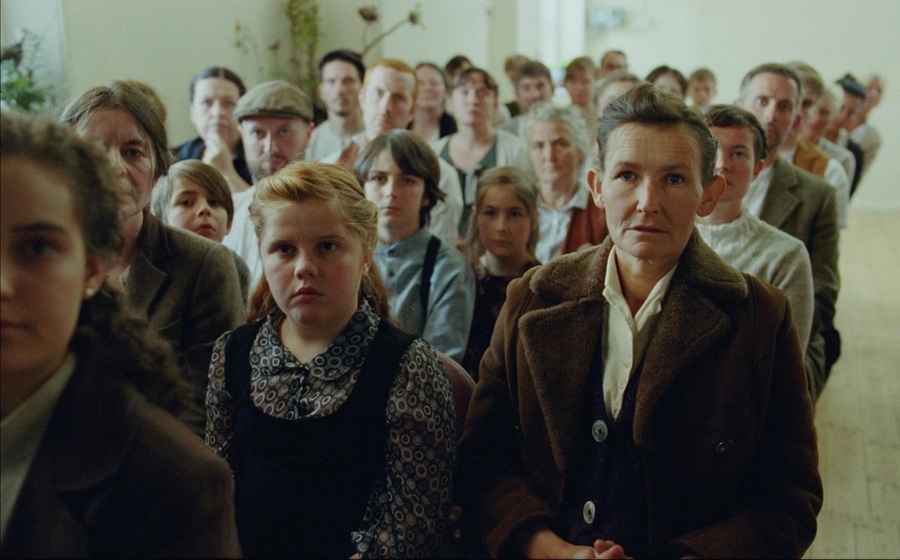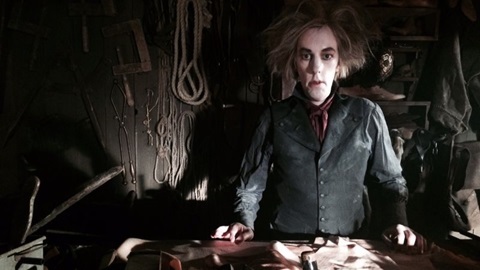Følkløric: Glasgow Short Film Festival's folk horror strand
One of the highlights of Glasgow Short Film Festival this year is Følkløric, a two-part strand of shorts exploring traditional and contemporary visions of folklore. The strand's co-curators, Grace Feinmann and Heather Bradshaw, introduce their concept
If you go down to Glasgow Short Film Festival this month, you're sure of a big surprise. Nestled in late-night slots you’ll find Følkløric, a two-programme strand tracing folklore on film, from classic ghost stories to modern twists on vampirism. The strand sprang from the imagination of programmers Grace Feinmann and Heather Bradshaw. The pair are friends and colleagues (they both work for GSFF’s sister festival, Glasgow Film Festival), and reckon that Følkløric has been brewing with them for a while. “Heather's got quite a strong foundational knowledge of folklore,” explains Feinmann over Zoom. “And I've studied folk horror in the past and just really love it as a genre. So just naturally, it’s something we chat about endlessly in the pub.”
The idea crystallised on a cinema trip last summer to see Medusa Deluxe, Thomas Hardiman’s murder mystery set in the world of competitive hairdressing. Afterwards, they were having another chat about folklore and film over a pint. “This might sound a bit cringe now, but at the time it felt very profound,” recalls Feinmann. “We were talking about how the cinema space is like the campfire; people gather around to watch stories in the dark. So that was a poetic flame that inspired us, and it grew into something more concrete from there.”
What makes films ‘folkloric’ can be tricky to pin down, so the pair started assembling the programme around a collection of classic works that became their framework. Stigma, a 1977 episode of the BBC’s long-running A Ghost Story for Christmas series, was one of these cornerstones. “Stigma is very rooted in folk horror but it was the first of these BBC ghost stories to subvert the setting,” says Bradshaw. “They’re usually M.R. James-style tales set in the past, but this had a contemporary setting.” So influential was Stigma that its bleak, grainy, washout 70s aesthetic has become a hallmark of modern folk horrors. “If you look at something like O, Glory! [Charlie Edwards-Moss and Joe Williams’s trippy, disorienting horror with a dash of sci-fi thrown in], that looks like classic folk horror because it’s rooted in the same visual language as Stigma.”
Feinmann also points to The Motorist, a gnarly Scottish horror directed by Ciaran Lyons, whose debut feature Tummy Monster screened at GFF (see our Scotland on Screen interview). “Ciaran does such amazing work in that film,” says Feinmann. “It’s so emblematic of that visual form of folk horror you see in Stigma: the style, but also the traits of folklore that are based in hysteria and social isolation and these skewed moral beliefs that snowball to the point of fracture.”
Films like Stigma, The Motorist and O, Glory! can be found in Følkløric’s first programme, Sticks and Stones, which according to the programme notes “invites you to experience folklore in all its terrible glory.” These are more traditional visions of folk storytelling. In programme two, What a Shame She Went Mad, things get more subversive. Specifically the idea of folklore shifts so that it's viewed through a feminist lens. Bradshaw points out that in folklore, women often do have agency; be it Macbeth’s witches or the seductive, shape-shifting selkies of Scottish myth. “Women are often shown to have magical power over men in the genre,” explains Bradshaw. “And that power is often punished in these stories. But in the second programme, we wanted to push beyond that idea.”
Bradshaw points to Cracked Screen: A Snapchat Story as an example. It follows a young Black woman from London who uses social media to broadcast her life before, during and after a random acid attack. “One of the reasons we wanted to include Cracked Screen was because it reflects this idea of folk ballads, and how women would use folklore to warn other women about men and about things that men could do to them,” explains Bradshaw, “but it's done in this really contemporary way through Snapchat stories.” Another standout in this programme is Steakhouse, a fantastic Portuguese animation where an abusive husband serves his wife a fillet steak he's intentionally burned to a crisp as a cruel punishment, but he bites off more than he can chew.
Another reason Bradshaw and Feinmann were drawn to exploring folklore is the wealth of homegrown films they could incorporate into the programme. “Scotland is so rooted in its folklore,” says Bradshaw. “That's something that we wanted to showcase.”
“We’ve often spoken about our admiration for Scottish filmmakers' tendency towards the strange,” says Feinmann, “even in films that aren’t directly folk horror or folklore. There's just something off-kilter about them.”
Why does Feinmann think that is? “Well there’s the gloomy weather for a start,” she suggests. She also brings up the theory of Caledonian Antisyzygy, a term she discovered from a friend doing a PhD in Scottish literature. “It’s such a great word and so useful,” she says. "It’s the idea of duelling traits within one entity. It applies to foundational texts of Scottish literature, like Jekyll and Hyde. But I think you see it in Scottish filmmaking as well. And folklore is perfect for that because there's always something happening off-screen, some horror or some evil that you're only seeing the effects of, as these people on screen become overcome by it.”
GSFF runs 20-24 Mar; glasgowshort.org
Følkløric 1: Sticks and Stones, Civic House, 21 Mar, 9pm
Følkløric 2: What a Shame She Went Mad, Civic House, 22 Mar, 8.45pm



